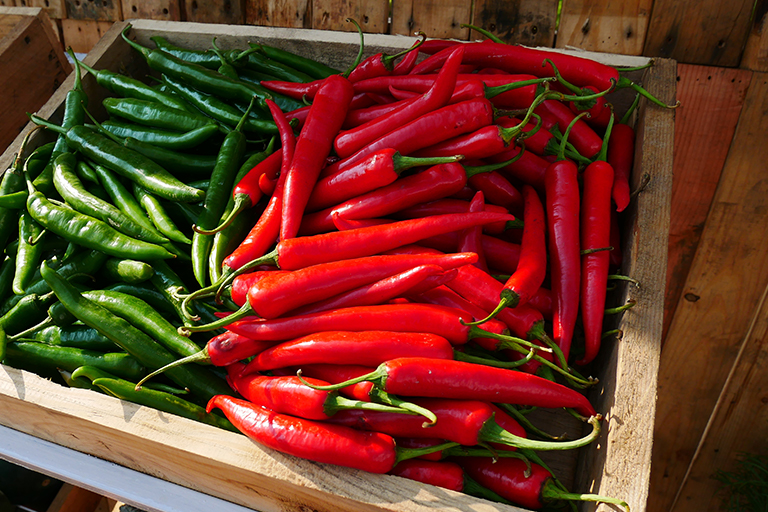By Vicki Spencer, Master Gardener
Toward the end of July and into August, roadside stands selling southern New Mexico’s Hatch green chiles start popping up everywhere. You can even find them on less traveled countryside roads. Anyone who spends much time in Colorado knows how much we look forward to this annual treat.
As soon as word spreads that a chile stand has appeared in Montrose, people in the Gunnison Valley begin making plans for the scenic drive over Cerro Summit. Anyone unable to make the trip can easily place an order with friends headed that way. The most important thing is to get your Hatch chiles before supplies sell out.
Granted, Hatch chile peppers may be more appealing than jalapeño peppers to those with sensitive pallets, but it is the distinctive flavor of the Hatch chile that made it so popular. When roasted, its sweetness is enhanced and the added smoky depth is unmatched. Members of Gunnison County Electric Association can certainly attest to this. By popular demand, one of our engineers brought salsa to potlucks, and when asked about his culinary secret, he indisputably replied, “Roasted Hatch green chiles.” If all this food talk doesn’t make you hungry, perhaps it makes you think about the benefits of adding peppers to your vegetable garden next year.
Peppers are a wonderful source of nutrition. They are rich in dietary fiber and vitamins, and provide iron, copper and potassium, which are important for overall health.
Peppers are easy to grow in Colorado. They need abundant sunlight, flourish in heat and prefer 80 degree days and 60 degree nights. While high-altitude gardeners will have more of a challenge due to lower temperatures, they can manage the problem by monitoring weather reports and covering plants when necessary. Fortunately, peppers are tolerant of different soils, although they prefer moist soil with good drainage. You can improve productivity by removing early blooms and encouraging plants to become stronger before setting fruit.
Ornamental pepper plants recently became popular because they can be integrated into landscapes and flower gardens. For instance, the NuMex Twilight is a gorgeous addition to gardens with its purple peppers, highlighted with yellow that fades to red. The Purple Flash pepper is similarly spectacular. It has purplish black leaves, shiny purple fruit that ripens from black to fiery red, and additional leaves with splashes of white, green and purple. Although it is edible, it’s best to avoid planting if you have children and pets because it is so hot.
With so many choices, it’s not too early to consider what to plant next year. For example, Paulino Gardens’ website lists 34 pepper varieties ranging from extremely hot habaneros to yellow sweet banana peppers. Bonnie Plants’ website, www.bonnieplants.com, is also helpful for decision making. It allows you to select pepper plants by type, heat level, fruit size and kitchen usage; or you can simply search by clicking on photos. It’s a fun way to explore options and get a head start on next year’s garden.
Gardener Vicki Spencer has an eclectic background in conservation, water, natural resources and more.

